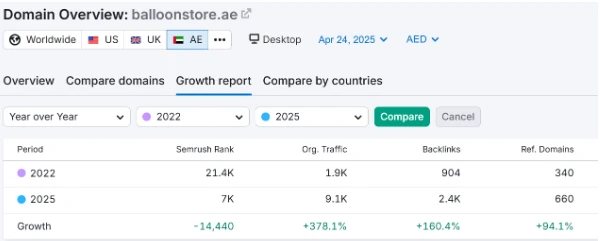Stop-Loss Orders: One Way To Limit Losses and Reduce Risk
- digitalmanqoosh
- June 15, 2023
- Uncategorized
- 0 Comments

Titan’s investment advisory services are available only to residents of the United States in jurisdictions where Titan is registered. Nothing on this website should be considered an offer, solicitation of an offer, or advice to buy or sell securities or investment products. Any historical returns, expected returns, or probability projections are hypothetical in nature and may not reflect actual future performance. Account holdings and other information provided are for illustrative purposes only and are not to be considered investment recommendations.
Boston Market reopens NJ locations closed due to unpaid wages – NorthJersey.com
Boston Market reopens NJ locations closed due to unpaid wages.
Posted: Thu, 14 Sep 2023 21:05:22 GMT [source]
This means the order could fill lower or higher than $25 depending on the next bid price. A stop order is an order to buy a security as its price is rising and hits a specified stop price, or sell a security as it is declining and reaches the stop price. Most typically investors set sell-stop orders to protect the profits, or limit the losses, of a long position. When the stop price is reached, the stop-loss order converts to a market order and is usually executed immediately thereafter. A trailing stop order is a stop or stop limit order in which the stop price is not a specific price.
Understanding how stop-limit orders work
The above chart illustrates the use of market orders versus limit orders. A stop-work order is a legal device used in the construction industry to suspend work until a decision or an agreement between the contracted parties has been reached. Because you’ve placed a stop order, you’ve taken a precautionary measure that can limit your losses or prevent them entirely.
This type of order is an available option with nearly every online broker. A stop-limit order is an order to buy or sell a stock that combines the features of a stop order and a limit order. Once the stop price is reached, a stop-limit order becomes a limit order that will be executed at a specified price (or better). The benefit of a stop-limit order is that the investor can control the price at which the order can be executed. Once triggered, a stop order becomes a market order, which will generally result in an execution. However, a specific execution price or price range isn’t guaranteed—the resulting execution price may be above, at, or below the stop price itself.
This may result in missed opportunities of profit should the appropriate prices not be targeted. Therefore, the investor may enter a sell stop order with a stop price of $60. If the stock’s price then falls to $60, the stop order will be triggered, and the investor’s position will be closed out, preserving roughly half of his profits and assuring that his winning trade doesn’t become a losing trade. A buy-stop order is an order to execute a buy transaction if and when the specified stop price is reached.
For trailing stop sell orders, as the inside bid increases to new highs, the trigger price is recalculated based on the new high bid. There are no hard-and-fast rules for the level at which stops should be placed; it totally depends on your individual investing style. An active trader might use a 5% level, while a long-term investor might choose 15% or more. At the end of the day, if you are going to be a successful investor, you have to be confident in your strategy.
Department of Labor and Workforce Development – NJ.gov
Department of Labor and Workforce Development.
Posted: Thu, 17 Aug 2023 07:00:00 GMT [source]
When you open a short trade you’re exposed to the risk that if an asset’s price goes up then that means you’re losing money as if you had to buy it back you would be doing so at a more expensive price. A stop-loss order is typically a risk mitigation tool to minimize potential losses. Though not inherently risky, there are disadvantages and downsides to stop-loss orders. When triggered, a stop order guarantees a transaction will occur but does not guarantee the price it will execute at.
Features of Stop and Limit Orders
If the security reaches the specified trigger price, the limit order activates and executes if the price is at or better than the price specified by the investor. Most online brokers offer stop-limit orders with a day-only or GTC expiry. These orders can guarantee a price limit, but the trade may not be executed. This can harm investors during a fast market if the stop order triggers, but the limit order does not get filled before the market price blasts through the limit price.

Once that stop price is reached, an order is executed to buy or sell a stock. That order then turns into a market order — actively trading on the market right away. A stop-loss order does not offer any price protection beyond the stop price. This means that if the market is experiencing rapid price movements or gaps, the trade may be executed at a price below the stop price. On the other hand, a stop-limit order offers price protection as it specifies a limit price at which the trader is willing to buy or sell. A stop order is filled at the market price after the stop price has been hit, regardless of whether the price changes to an unfavorable position.
Market hours
In contrast, a stop-limit order is not guaranteed to be executed, as the order will only be filled if the limit price is met. Therefore, a stop-loss order is better should a trader want to ensure a trade is executed regardless of price. Stop orders are frequently placed by traders immediately after entering a new market position, to limit potential losses. Using the same example as before, when the investor buys stock shares at $50 a share, they may decide that they do not want to risk losing more than $5 per share on the trade. Similarly, you can set a limit order to sell a stock when a specific price is available. Imagine that you own stock worth $75 per share and want to sell if the price gets to $80 per share.
Additionally, when it comes to stop-loss orders, you don’t have to monitor how a stock is performing daily. This convenience is especially handy when you are on vacation or in a situation that prevents you from watching your stocks for an extended period. https://1investing.in/ Amanda Bellucco-Chatham is an editor, writer, and fact-checker with years of experience researching personal finance topics. Specialties include general financial planning, career development, lending, retirement, tax preparation, and credit.
The key is picking a stop-loss percentage that allows a stock to fluctuate day-to-day, while also preventing as much downside risk as possible. Setting a 5% stop-loss order on a stock that has a history of fluctuating 10% or more in a week may not be the best strategy. You’ll most likely just lose money on the commission generated from the execution of your stop-loss order. The stop-limit order will be executed at a specified price, or better, after a given stop price has been reached. Once the stop price is reached, the stop-limit order becomes a limit order to buy or sell at the limit price or better.
Sell Stop Order
There is no guarantee that execution of a stop order will be at or near the stop price. Schwab does not recommend the use of technical analysis as a sole means of investment research. Make sure your brokerage supports all of the stop orders you want to use.
- (Limit orders are generally executed on a first come, first served basis.) That said, it’s also possible your order could fill at an even better price.
- Most online brokers offer stop-limit orders with a day-only or GTC expiry.
- Not every trade is a winner, so you need to have a strategy in place before you enter a position, knowing where you’ll limit your losses and take your profits.
- Through these options, the stop-limit order is active until the price is triggered to buy or until the transaction expires.
- Both types of orders are used to mitigate risk against potential losses on existing positions or to capture profits on swing trading.
As with any type of order on your investments, there are pros and cons to take into consideration before placing this type of order. Friday’s order from Gov. Michelle Lujan Grisham, a Democrat, targets cities and counties averaging 1,000 or more violent crimes per 100,000 residents a year since 2021, according to the FBI’s crime data. The municipality must also experience more than 90 firearm-related emergency department visits per 100,000 residents from July 2022 to June 2023. The IRS has a list of red flags to watch out for aggressive marketing and questionable ERC claims. The ERC is a complex claim with precise requirements to help businesses during the pandemic, and the IRS has received approximately 3.6 million of these claims over the course of the program.
What are the risks of trailing stop orders?
The main disadvantage is that it functions like a Market order and it doesn’t guarantee the price. It all depends on the asset’s availability at each price level at the moment of execution. If you try to place a pending sell order with a price cheaper how to calculate mc than the current price, the trading platform will automatically create a Sell Stop order. Here lies the importance of truly understanding order types, it will give you a good understanding on what to expect from your broker’s execution.
However, its accuracy, completeness, or reliability cannot be guaranteed. A price gap occurs when a stock’s price makes a sharp move up or down with no trading occurring in between. It can be due to factors like earnings announcements, a change in an analyst’s outlook or a news release. Gaps frequently occur at the open of major exchanges, when news or events outside of trading hours have created an imbalance in supply and demand.

You can set limits for both buying and selling and set parameters for executing orders on your terms. The limit price helps lower risk by stating that orders must be traded below or up to the limit price. Traders set a period of time when the stop-limit order is effective or can choose the good-til-canceled (GTC) option.
Actual investment return and principal value is likely to fluctuate and may depreciate in value when redeemed. Liquidity and distributions are not guaranteed, and are subject to availability at the discretion of the Third Party Fund. Learn all about how stop-loss orders can help investors achieve a variety of goals by setting floor and ceiling prices that can limit a loss or lock in a profit. Some slippage is common among actively traded stocks because market prices are often fluctuating. Jane now gives the broker a buy stop-limit order, with a stop price of $755, and a limit price of $775. The difference between these two conditions is important and helps explain why a stop-limit, which combines both, offers investors more control over trading prices.
- On top of that, if it does meet the stop price, your trade will occur at the next available price which could be higher or lower than you want.
- Make sure your brokerage supports all of the stop orders you want to use.
- If the security reaches the specified trigger price, the limit order activates and executes if the price is at or better than the price specified by the investor.
- This type of order can be useful for investors who want to enter a position at a specific price point.
- A market order is an order to buy or sell a stock at the market’s current best available price.
- Here lies the importance of truly understanding order types, it will give you a good understanding on what to expect from your broker’s execution.
Alternatively, a stop-limit order guarantees the price a transaction will occur at but may not execute a transaction. Be sure to check if this option is available at your brokerage firm and how they define prices so you know when your order would execute. Stop-limit orders are commonly free to enter into; ensure you understand your broker’s fee structure before setting orders and unexpectedly being assessed order fees. The SEC’s Office of Investor Education and Advocacy is issuing this Investor Bulletin to help educate investors about the difference between using “stop” and “stop limit” orders to buy and sell stocks.














